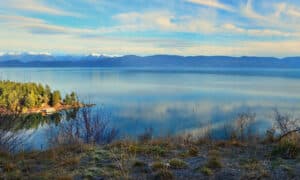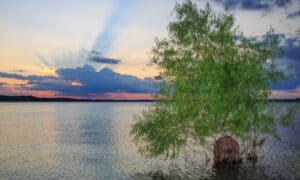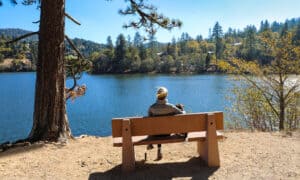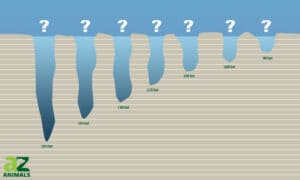The 8 Most Remote Lakes in the World
@media (min-width: 481px) {
.mobile-top-content {
display: none;
}
}
#mobileTopContentCTACarouselControls { overflow: hidden; text-overflow: ellipsis; white-space: nowrap; }
.mobile-top-content .more { color: #fff; }
.mobile-top-content a { color: #fff; text-decoration: underline; }
.mobile-top-content a:hover { color: #fff; text-decoration: underline; }
@media (max-width: 480px) {
.mobile-top-content {
background-color: #06a10b;
color: #fff;
text-align: center;
/*height: 60px;
padding-top:5px;*/
font-size:80%;
/* display: block; */
margin: 0px -30px;
}
}
Lakes all around the world are a sight to behold and there are several of them. Lake water is mostly still compared to streams and rivers. From tourist attractions to locations for scientific discoveries, many lakes are potential destinations for people all year round. While some are located in villages and around civilization, some are not easily accessible. But some lakes are so remote, you won’t even know they existed. Here are 8 most remote lakes in the world:
Lake Baikal, Russia
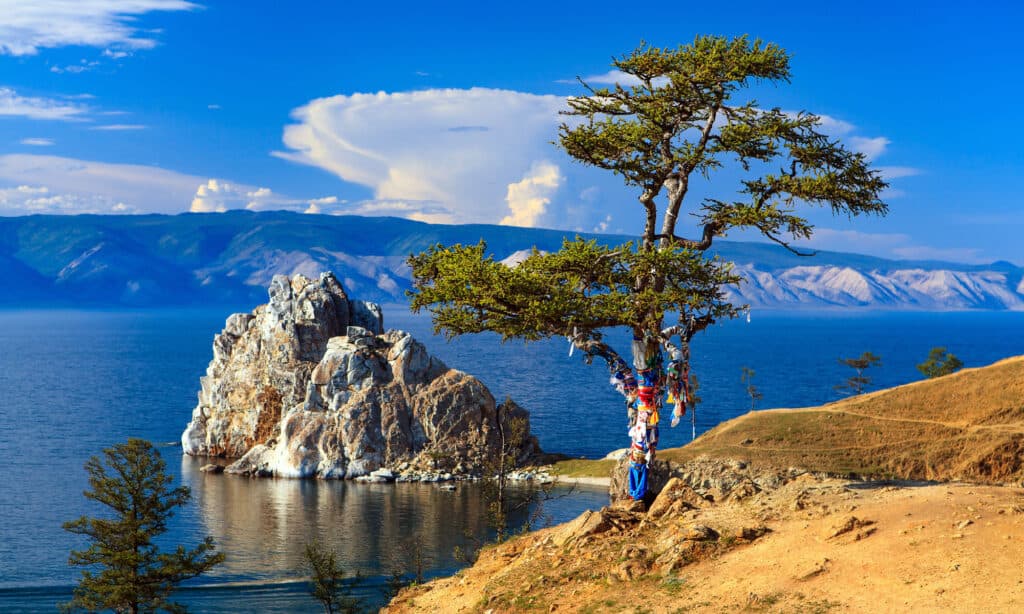
iStock.com/sbelov
Lake Baikal is 6,567km (4,080 miles) from London, 9,176km (5,701 miles) from Toronto, and 10,561km (6,562 miles) from Sydney. The lake is surrounded by mountains, forests, and wild rivers near the Mongolian border, in south-central Siberia. The area is a breathtaking area of natural beauty.
Lake Baikal is the deepest and oldest freshwater lake in the world, containing about 20% of all unfrozen surface freshwater globally. The water in Baikal is more than the water in all the Great Lakes combined. Lake Baikal is one of the most transparent and oldest lakes globally, aged 25 million.
Lake Baikal is a habitat for over 2,000 animals and plants. Two-thirds of the life in Lake Baikal doesn’t exist anywhere else in the world. The Baikal seal is found in the Baikal and is one of the world’s only freshwater species of seal.
Lake Vostok, Antarctica

Goddard Space Flight Center / This file is in the public domain in the United States because it was solely created by NASA. NASA copyright policy states that “NASA material is not protected by copyright unless noted”. (See Template:PD-USGov, NASA copyright policy page or JPL Image Use Policy.)
Lake Vostok is a freshwater lake located in Antarctica. The lake is 160 miles long and 30 miles wide. With an average depth of 1,417 feet, it is one of the world’s largest lakes in depth, volume and size. The lake is located below 13,100 feet of the East Antarctic Ice Sheet. Lake Vostok was named after Vostok Station, while the Vostok Station was named after the Russian ship that discovered Antarctica.
Roopkund Lake, India

Chetan Shende/Shutterstock.com
High in the Indian Himalayas, Roopkund Lake is a remote lake located in a snowy valley among hundreds of human skeletons. The local government promotes the lake to tourists as a “mystery lake.” In Uttarakhand, India, 16,500ft above sea level at the base of a steep slope on Trisul, the Roopkund Lake is near one of India’s highest mountains.
Also known as the “lake of skeletons,” skeletal remains are flung around and below the ice at the lake. The lake expands and shrinks depending on the weather and season, remaining frozen most of the year. The skeletons and some well-preserved attached flesh are only visible when the snow melts. Scientists and anthropologists have researched and studied skeletal remains for over 500 years.
Lake Turkana
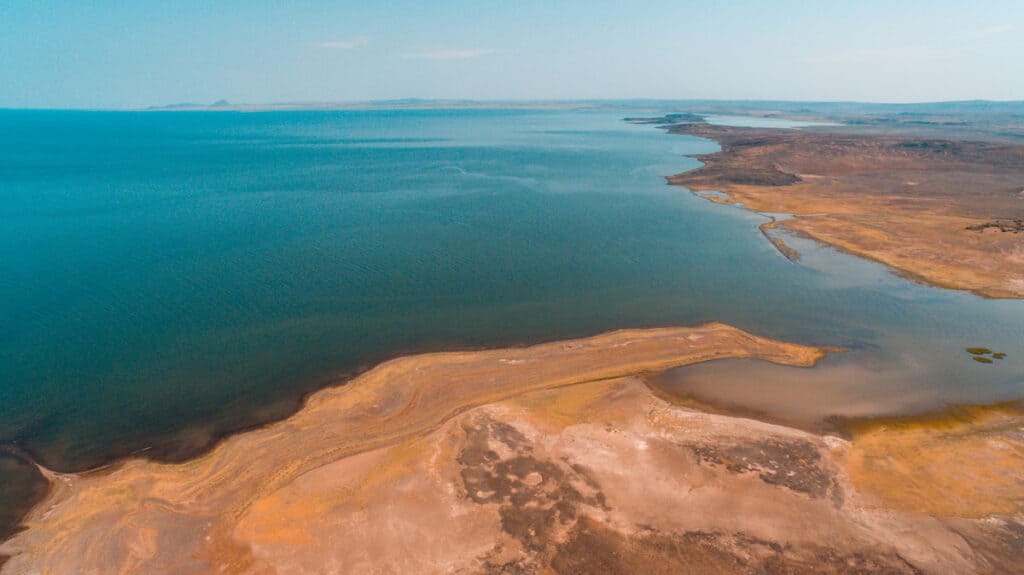
MOIZ HUSEIN STORYTELLER/Shutterstock.com
Turkana is the most saline among large lakes in Africa. The lake is a remarkable laboratory for studying plant and animal communities. The area is a stop for migrant waterfowl, a breeding ground for the Nile crocodile, hippopotamus, and several venomous snakes.
Lake Turkana is the fourth largest lake in Africa. It is popularly called the Jade Sea due to its magnificent color. The lake’s Koobi Fora deposits, which are rich in molluscan, mammalian, and other fossil remains, have contributed to the study of paleo-environments beyond other areas on the continent.
Lake Lila, New York

Cornellier / Creative Commons – License
Lake Lila is tucked away within New York’s almost unfathomably large 6.1-million acre Adirondack Park. The park is about three times as large as Yellowstone. The lake is hidden in the park’s remote William C. This Wilderness Area is only accessible through canoe portage or a six-mile dirt road. The area gives visitors solitude and peace that is well worth it.
Lake Abert, Oregon
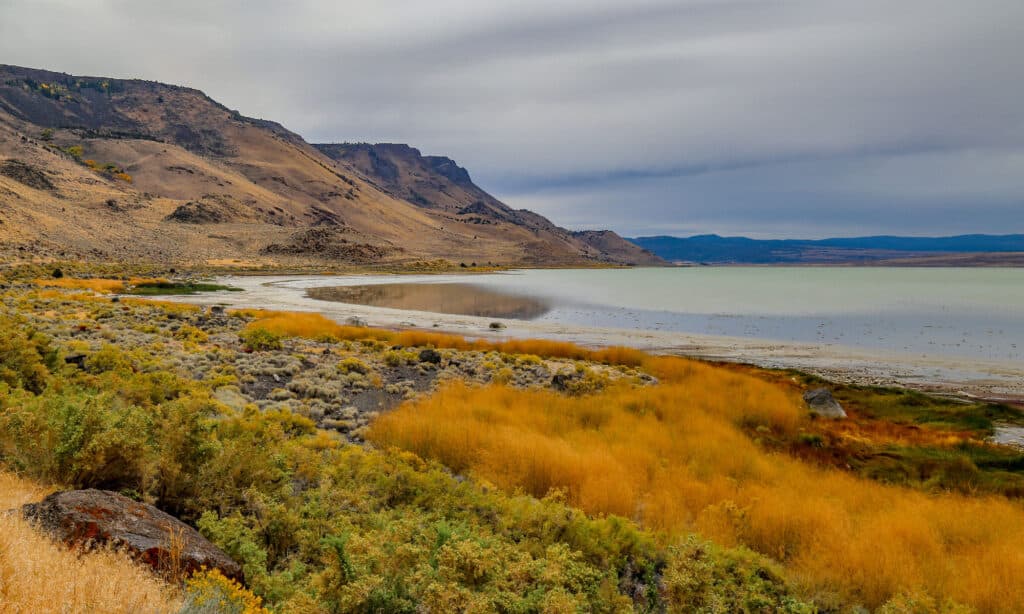
CSNafzger/Shutterstock.com
Lake Abert is one of the unique lakes among the lakes of the Beaver State. Some of the famous lakes in the State include Odell Lake, located in Deschutes National Forest, and Crater Lake.
The alkaline Abert Lake is desolate, with waters too salty for fish life. It has a beautiful appeal similar to the Salton Sea or California’s Mono Lake. The lake is also a quiet destination for tourists seeking solitude.
Lake Khuvsgul, Mongolia
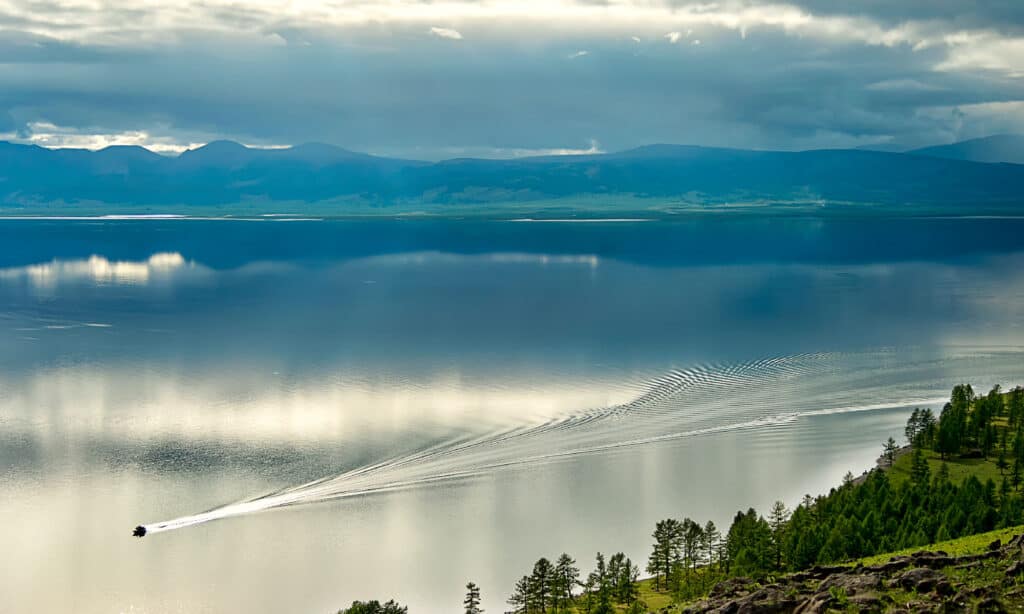
iStock.com/annie_zhak
Lake Khuvsgul is the most profound and largest lake in Mongolia. The Khuvsgul Lake is the largest tributary lake to Lake Baikal in Russia. The lake is located in the northernmost province of Mongolia. Lake Khuvsgul mothers ninety-six streams and rivers, including the Egiin River, which joins the Selenge River on its path to Baikal.
Lake Khuvsgul is 136 km (85 miles) long, water beneath 328ft & 36 km (22 miles) wide, 860ft deep, and is located at an altitude of 5400ft above sea level. The area’s tourist attractions include Flora and Taiga Fauna, Tsaatan, and practicing reindeer breeding. Lake Khuvsgul is an excellent location for bird watching because of its location as a migration route for Siberian birds. Tourists at the lake can engage in birdwatching, canoeing, kayaking, trekking, sportfishing or fishing, and hiking.
Lake Eyre, Australia

iStock.com/JohnCarnemolla
Lake Eyre is also called Kati Thanda, located in South Australia. The great salt lake in the central area of South Australia has a total area of 4,281 square miles. It was first discovered and named after an English explorer and British colonial official, Edward John Eyre, in 1840. By the 1870s, the extent of the lake was determined. Lake Eyre forms the lowest area in the Australian continent.
The lake’s crystalized surface glitters and stretches far beyond the eyesight whenever its water level is low. Every ten years, the lake floods, reaching its total capacity, and waterbirds arrive in their thousands. The channels become full of fish, and the floodplains are covered with wildflowers. When the lake water starts to evaporate, the lake becomes a peculiar pink hue created by a pigment from a particular salt-loving algae species.
More from A-Z Animals
.more-snake-card-image { max-height:140px !important; }
@media (min-width: 481px) {
.mobile-top-content {
display: none;
}
}
#mobileTopContentCTACarouselControls { overflow: hidden; text-overflow: ellipsis; white-space: nowrap; }
.mobile-top-content .more { color: #fff; }
.mobile-top-content a { color: #fff; text-decoration: underline; }
.mobile-top-content a:hover { color: #fff; text-decoration: underline; }
@media (max-width: 480px) {
.mobile-top-content {
background-color: #06a10b;
color: #fff;
text-align: center;
/*height: 60px;
padding-top:5px;*/
font-size:80%;
/* display: block; */
margin: 0px -30px;
}
}
Lakes all around the world are a sight to behold and there are several of them. Lake water is mostly still compared to streams and rivers. From tourist attractions to locations for scientific discoveries, many lakes are potential destinations for people all year round. While some are located in villages and around civilization, some are not easily accessible. But some lakes are so remote, you won’t even know they existed. Here are 8 most remote lakes in the world:
Lake Baikal, Russia

iStock.com/sbelov
Lake Baikal is 6,567km (4,080 miles) from London, 9,176km (5,701 miles) from Toronto, and 10,561km (6,562 miles) from Sydney. The lake is surrounded by mountains, forests, and wild rivers near the Mongolian border, in south-central Siberia. The area is a breathtaking area of natural beauty.
Lake Baikal is the deepest and oldest freshwater lake in the world, containing about 20% of all unfrozen surface freshwater globally. The water in Baikal is more than the water in all the Great Lakes combined. Lake Baikal is one of the most transparent and oldest lakes globally, aged 25 million.
Lake Baikal is a habitat for over 2,000 animals and plants. Two-thirds of the life in Lake Baikal doesn’t exist anywhere else in the world. The Baikal seal is found in the Baikal and is one of the world’s only freshwater species of seal.
Lake Vostok, Antarctica

Goddard Space Flight Center / This file is in the public domain in the United States because it was solely created by NASA. NASA copyright policy states that “NASA material is not protected by copyright unless noted”. (See Template:PD-USGov, NASA copyright policy page or JPL Image Use Policy.)
Lake Vostok is a freshwater lake located in Antarctica. The lake is 160 miles long and 30 miles wide. With an average depth of 1,417 feet, it is one of the world’s largest lakes in depth, volume and size. The lake is located below 13,100 feet of the East Antarctic Ice Sheet. Lake Vostok was named after Vostok Station, while the Vostok Station was named after the Russian ship that discovered Antarctica.
Roopkund Lake, India

Chetan Shende/Shutterstock.com
High in the Indian Himalayas, Roopkund Lake is a remote lake located in a snowy valley among hundreds of human skeletons. The local government promotes the lake to tourists as a “mystery lake.” In Uttarakhand, India, 16,500ft above sea level at the base of a steep slope on Trisul, the Roopkund Lake is near one of India’s highest mountains.
Also known as the “lake of skeletons,” skeletal remains are flung around and below the ice at the lake. The lake expands and shrinks depending on the weather and season, remaining frozen most of the year. The skeletons and some well-preserved attached flesh are only visible when the snow melts. Scientists and anthropologists have researched and studied skeletal remains for over 500 years.
Lake Turkana

MOIZ HUSEIN STORYTELLER/Shutterstock.com
Turkana is the most saline among large lakes in Africa. The lake is a remarkable laboratory for studying plant and animal communities. The area is a stop for migrant waterfowl, a breeding ground for the Nile crocodile, hippopotamus, and several venomous snakes.
Lake Turkana is the fourth largest lake in Africa. It is popularly called the Jade Sea due to its magnificent color. The lake’s Koobi Fora deposits, which are rich in molluscan, mammalian, and other fossil remains, have contributed to the study of paleo-environments beyond other areas on the continent.
Lake Lila, New York

Cornellier / Creative Commons – License
Lake Lila is tucked away within New York’s almost unfathomably large 6.1-million acre Adirondack Park. The park is about three times as large as Yellowstone. The lake is hidden in the park’s remote William C. This Wilderness Area is only accessible through canoe portage or a six-mile dirt road. The area gives visitors solitude and peace that is well worth it.
Lake Abert, Oregon

CSNafzger/Shutterstock.com
Lake Abert is one of the unique lakes among the lakes of the Beaver State. Some of the famous lakes in the State include Odell Lake, located in Deschutes National Forest, and Crater Lake.
The alkaline Abert Lake is desolate, with waters too salty for fish life. It has a beautiful appeal similar to the Salton Sea or California’s Mono Lake. The lake is also a quiet destination for tourists seeking solitude.
Lake Khuvsgul, Mongolia

iStock.com/annie_zhak
Lake Khuvsgul is the most profound and largest lake in Mongolia. The Khuvsgul Lake is the largest tributary lake to Lake Baikal in Russia. The lake is located in the northernmost province of Mongolia. Lake Khuvsgul mothers ninety-six streams and rivers, including the Egiin River, which joins the Selenge River on its path to Baikal.
Lake Khuvsgul is 136 km (85 miles) long, water beneath 328ft & 36 km (22 miles) wide, 860ft deep, and is located at an altitude of 5400ft above sea level. The area’s tourist attractions include Flora and Taiga Fauna, Tsaatan, and practicing reindeer breeding. Lake Khuvsgul is an excellent location for bird watching because of its location as a migration route for Siberian birds. Tourists at the lake can engage in birdwatching, canoeing, kayaking, trekking, sportfishing or fishing, and hiking.
Lake Eyre, Australia

iStock.com/JohnCarnemolla
Lake Eyre is also called Kati Thanda, located in South Australia. The great salt lake in the central area of South Australia has a total area of 4,281 square miles. It was first discovered and named after an English explorer and British colonial official, Edward John Eyre, in 1840. By the 1870s, the extent of the lake was determined. Lake Eyre forms the lowest area in the Australian continent.
The lake’s crystalized surface glitters and stretches far beyond the eyesight whenever its water level is low. Every ten years, the lake floods, reaching its total capacity, and waterbirds arrive in their thousands. The channels become full of fish, and the floodplains are covered with wildflowers. When the lake water starts to evaporate, the lake becomes a peculiar pink hue created by a pigment from a particular salt-loving algae species.


